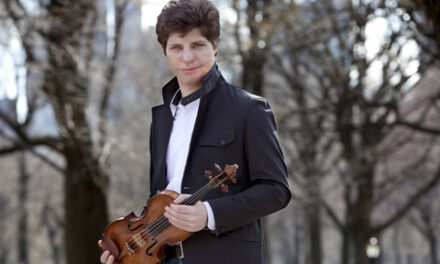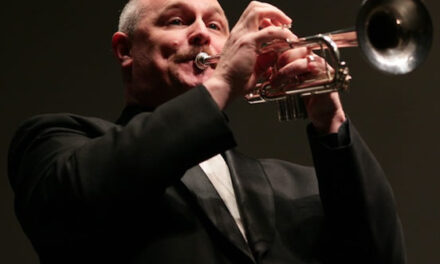Great programming, a legendary guest artist, and outstanding ensemble playing that can stand up to comparisons with any other orchestra: who can ask for anything more? The North Carolina Symphony, under the leadership of Musical Director Grant Llewellyn, has reached the point where we now take their excellence for granted. At their home base of Meymandi Concert Hall, the orchestra played a beautifully blended concert that demonstrated their growth and rapid rise to the top echelon of orchestras.
The evening began with a thinned-down orchestra for a sparkling presentation of J.S. Bach’s Orchestral Suite No. 4 in D. Although joyous music does not necessarily reflect a happy time in a composer’s life, nor vice-versa, Bach was enjoying a rather positive employee-management relationship when this piece was composed. With its three trumpets and three oboes, in addition to the usual forces, this is an exultant and celebratory work. Having observed Llewellyn performing this and other Baroque works, it is clear he knows how to extract the best features of Historically Informed Practice (HIP), but without the pomposity that afflicts some of that crowd. The tempos are on the brisk side and articulation across all sections is sharply etched. This suite is in five movements with the Bourrees and Minuets each having a first and second section. A harpsichord was also employed, but the familiar tinkling was even more faint than is usually the case. Although scored as just part of the continuo section, the bassoon part was at times the most interesting – and difficult sounding – and Principal John Pederson was magnificent forging a beautiful wooden, earthy bottom to the ensemble.
You can tell a lot about the artist(s) performing by the presence and anticipation of nearly the entire community of like-fingered instrumentalists at the concert. The lobby of Meymandi was teeming with cellists, all revved up to hear Lynn Harrell, who is certainly one of the elder statesman of the instrument. Awaiting us was a performance of Dmitri Shostakovich’s Cello Concerto No.1, written in 1959 for Mstislav Rostropovich. The opening is anything but subtle as we skip the usual orchestral introduction and the cellist immediately proclaims the four note sardonic motive that fills the first movement and comes back in the finale.
Harrell does not have quite the penetrating sound (or perhaps instrument) of other cellists that I have heard in Meymandi, but that is not necessarily a negative. Through his peerless technique and sensitive musicality he commands the listener to focus intently on his playing. As is often the case in much of Shostakovich’s compositions, he juxtaposes moments of circus-like frivolity with nearly unendurable poignancy and desolation. This is the case here as the second movement breaks from the carnival atmosphere of the opening and unfolds a musical landscape so bleak and desolate that you can almost hear the tears of the listener. The cadenza slowly climbs back to a more positive outlook leading in to the fourth and final movement where at times we expect to see characters from a Fellini movie. Harrell seemed genuinely touched by the overwhelming response and rewarded the house with a reading of what can arguably be called the instruments “greatest hit:” the prelude to the first cello suite of Bach.
By 1885, the year of the premiere of Brahms’ Symphony No. 4 in E minor, he was clearly the recognized master of orchestral music and could thankfully dispose of the simultaneous pressure and insult of having his first symphony labeled by some as “Beethoven’s tenth.” The fourth, in the relatively unusual symphonic key of E minor, is a masterpiece that melds the forward looking along with ancient musical traditions. Llewellyn had the full complement of players – and then some – to take full advantage of the wide dynamic and emotional range of this work. The opening of the second movement – featuring the woodwind section – was one of the quietest and subdued, but one of the highlights of the entire work. Playing in the melodic purgatory of the ancient Phrygian mode, the line between major and minor was blurred resulting in a beautiful hazy unease.
While listening to many concerts, often I become drawn to a single player – in chamber music – or one section of the orchestra. During tonight’s performance I was especially impressed with the entire horn section. Principal Brian Blanchard, Associate Principal Kimberly Van Pelt and section players Christopher Caudill and Rachel Niketopoulos were superb. Whether playing exposed virtuoso solo passages or blending chordally like a great organ, they were an integral part of raising the level of the Brahms to that of truly as good as it gets. By the time we arrived at the majestic passacaglia of the last movement, Llewellyn and the orchestra were playing with the confidence and deserved swagger of an ensemble that has now become the one that others aspire to emulate.












